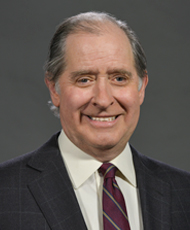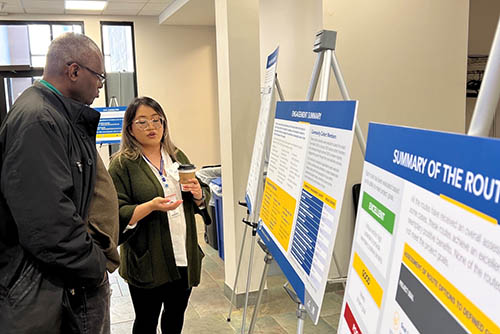Community creates its own vision around light rail
May 2022
 “Nothing about us, without us.” It’s a common refrain from people in historically marginalized and underserved communities. These five words are the profound core of what it takes to plan and build a better region, and they are at the heart of the work we are doing to move ahead with the Blue Line light rail extension through North Minneapolis.
“Nothing about us, without us.” It’s a common refrain from people in historically marginalized and underserved communities. These five words are the profound core of what it takes to plan and build a better region, and they are at the heart of the work we are doing to move ahead with the Blue Line light rail extension through North Minneapolis.
More than 160,000 times a day, Twin Cities motorists drive on I-94 between downtown Saint Paul and downtown Minneapolis, the best example of a project that was built without community involvement. When that freeway segment was constructed, freeway planners did not engage Saint Paul’s Rondo neighborhood, a thriving African American community.
Rondo thrived socially, financially, and culturally despite laws and financial practices that limited where people of color could live. But when it came time to build I-94, project managers condemned blocks of housing in this redlined neighborhood. Because properties in black neighborhoods were (and still are) valued less than comparable white neighborhoods, Rondo residents left their homes with diminished buying power and even fewer options for buying new homes.
It is essential that Rondo remain in the forefront of our thoughts right now because we are in the process of planning a light rail line through North Minneapolis. It is imperative that the Blue Line extension from downtown Minneapolis to Brooklyn Park be a benefit to the region’s largest community of color.
If we don’t do this right, we risk pricing the people who live, work, and own businesses along West Broadway Avenue out of their neighborhoods. Light rail investment draws new investment wherever it runs. New housing and businesses will spring up as the neighborhoods served by light rail connect people to the rest of the region. Our role is to ensure that investment benefits the businesses and residents who live in the neighborhood now, in addition to attracting new investment.
 The Met Council can’t do this alone. The U of M’s Center for Urban and Regional affairs is leading the effort to create a working group of residents, business owners, nonprofits, and community and cultural groups who will guide this important work. Over the next year, that group will be engaging with people and communities who will live with the Blue Line Extension every day. The Met Council and Hennepin County will be participants in this important discussion.
The Met Council can’t do this alone. The U of M’s Center for Urban and Regional affairs is leading the effort to create a working group of residents, business owners, nonprofits, and community and cultural groups who will guide this important work. Over the next year, that group will be engaging with people and communities who will live with the Blue Line Extension every day. The Met Council and Hennepin County will be participants in this important discussion.
You can learn more about this important project and find out how you can make your voice heard by going to MyBlueLineExt.org.
The community engagement work is being led by C Terrence Anderson, a Minneapolis Northside resident who is the Director of Community-Based Research for the Center for Urban and Regional Affairs. He summed up his work best when he said, “The community creates its own vision around the Blue Line extension to ensure it benefits us. At the end of the day, it’s gotta be us deciding what we need.”